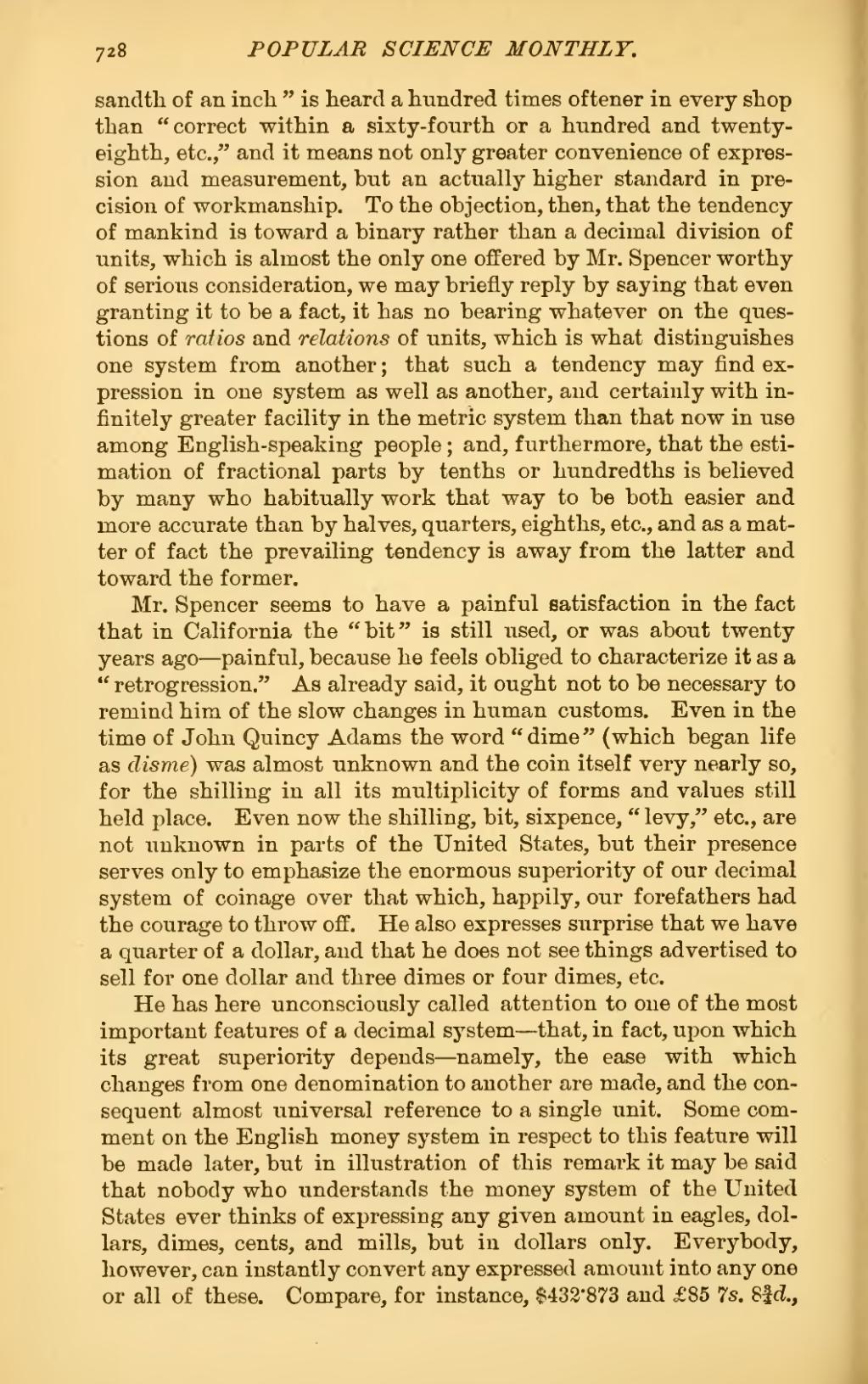sandth of an inch" is heard a hundred times oftener in every shop than "correct within a sixty-fourth or a hundred and twenty-eighth, etc.," and it means not only greater convenience of expression and measurement, but an actually higher standard in precision of workmanship. To the objection, then, that the tendency of mankind is toward a binary rather than a decimal division of units, which is almost the only one offered by Mr. Spencer worthy of serious consideration, we may briefly reply by saying that even granting it to be a fact, it has no bearing whatever on the questions of ratios and relations of units, which is what distinguishes one system from another; that such a tendency may find expression in one system as well as another, and certainly with infinitely greater facility in the metric system than that now in use among English-speaking people; and, furthermore, that the estimation of fractional parts by tenths or hundredths is believed by many who habitually work that way to be both easier and more accurate than by halves, quarters, eighths, etc., and as a matter of fact the prevailing tendency is away from the latter and toward the former.
Mr. Spencer seems to have a painful satisfaction in the fact that in California the "bit" is still used, or was about twenty years ago—painful, because he feels obliged to characterize it as a "retrogression." As already said, it ought not to be necessary to remind him of the slow changes in human customs. Even in the time of John Quincy Adams the word "dime" (which began life as disme) was almost unknown and the coin itself very nearly so, for the shilling in all its multiplicity of forms and values still held place. Even now the shilling, bit, sixpence, "levy," etc., are not unknown in parts of the United States, but their presence serves only to emphasize the enormous superiority of our decimal system of coinage over that which, happily, our forefathers had the courage to throw off. He also expresses surprise that we have a quarter of a dollar, and that he does not see things advertised to sell for one dollar and three dimes or four dimes, etc.
He has here unconsciously called attention to one of the most important features of a decimal system—that, in fact, upon which its great superiority depends—namely, the ease with which changes from one denomination to another are made, and the consequent almost universal reference to a single unit. Some comment on the English money system in respect to this feature will be made later, but in illustration of this remark it may be said that nobody who understands the money system of the United States ever thinks of expressing any given amount in eagles, dollars, dimes, cents, and mills, but in dollars only. Everybody, however, can instantly convert any expressed amount into any one or all of these. Compare, for instance, $433·873 and £85 7s. 8
34
d.,
